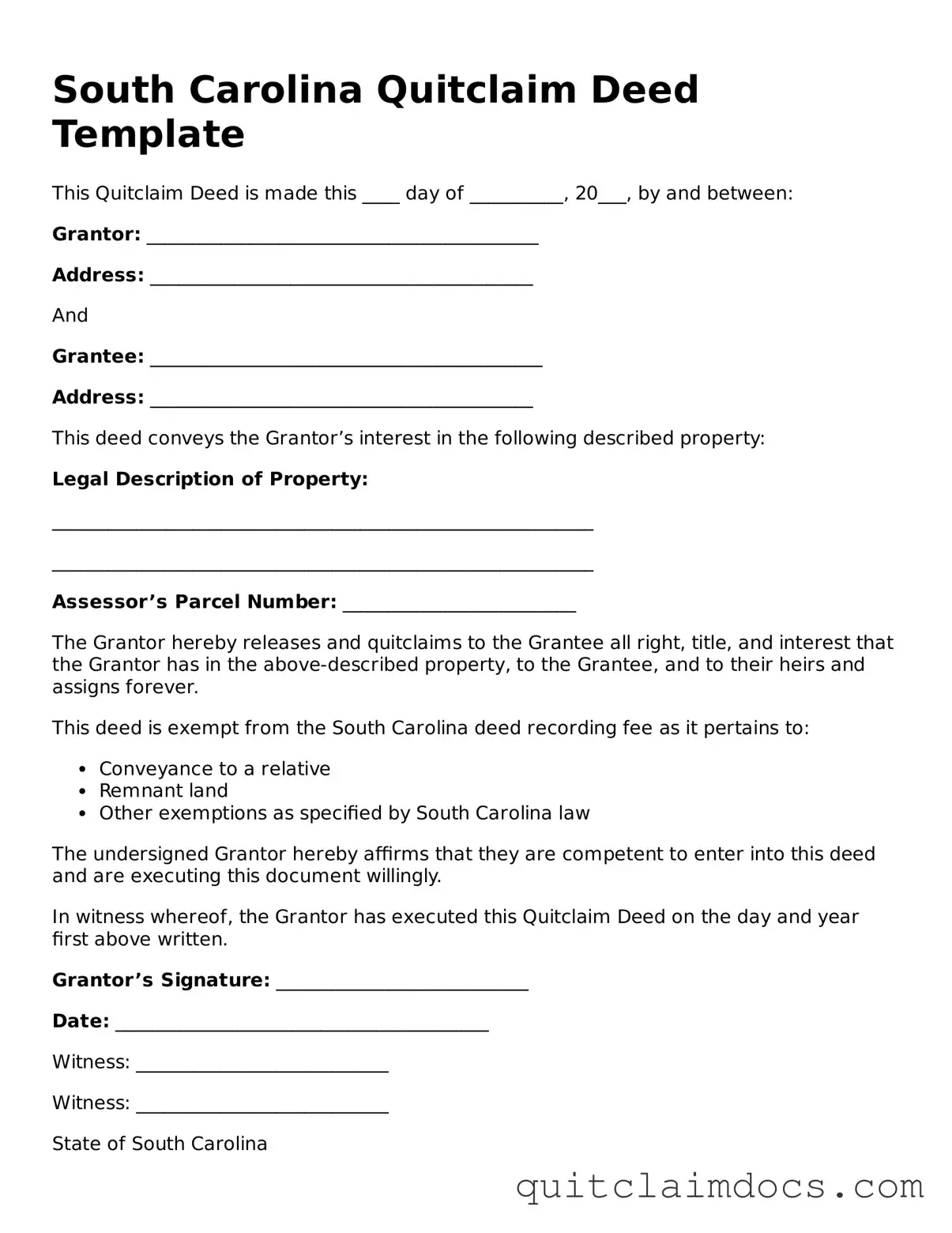South Carolina Quitclaim Deed Template
This Quitclaim Deed is made this ____ day of __________, 20___, by and between:
Grantor: __________________________________________
Address: _________________________________________
And
Grantee: __________________________________________
Address: _________________________________________
This deed conveys the Grantor’s interest in the following described property:
Legal Description of Property:
__________________________________________________________
__________________________________________________________
Assessor’s Parcel Number: _________________________
The Grantor hereby releases and quitclaims to the Grantee all right, title, and interest that the Grantor has in the above-described property, to the Grantee, and to their heirs and assigns forever.
This deed is exempt from the South Carolina deed recording fee as it pertains to:
- Conveyance to a relative
- Remnant land
- Other exemptions as specified by South Carolina law
The undersigned Grantor hereby affirms that they are competent to enter into this deed and are executing this document willingly.
In witness whereof, the Grantor has executed this Quitclaim Deed on the day and year first above written.
Grantor’s Signature: ___________________________
Date: ________________________________________
Witness: ___________________________
Witness: ___________________________
State of South Carolina
County of ___________________________
Personally appeared before me, the undersigned notary public, the above-named Grantor, and acknowledged the due execution of the foregoing instrument.
Given under my hand and seal this ____ day of __________, 20___.
Notary Public
My Commission Expires: _______________
